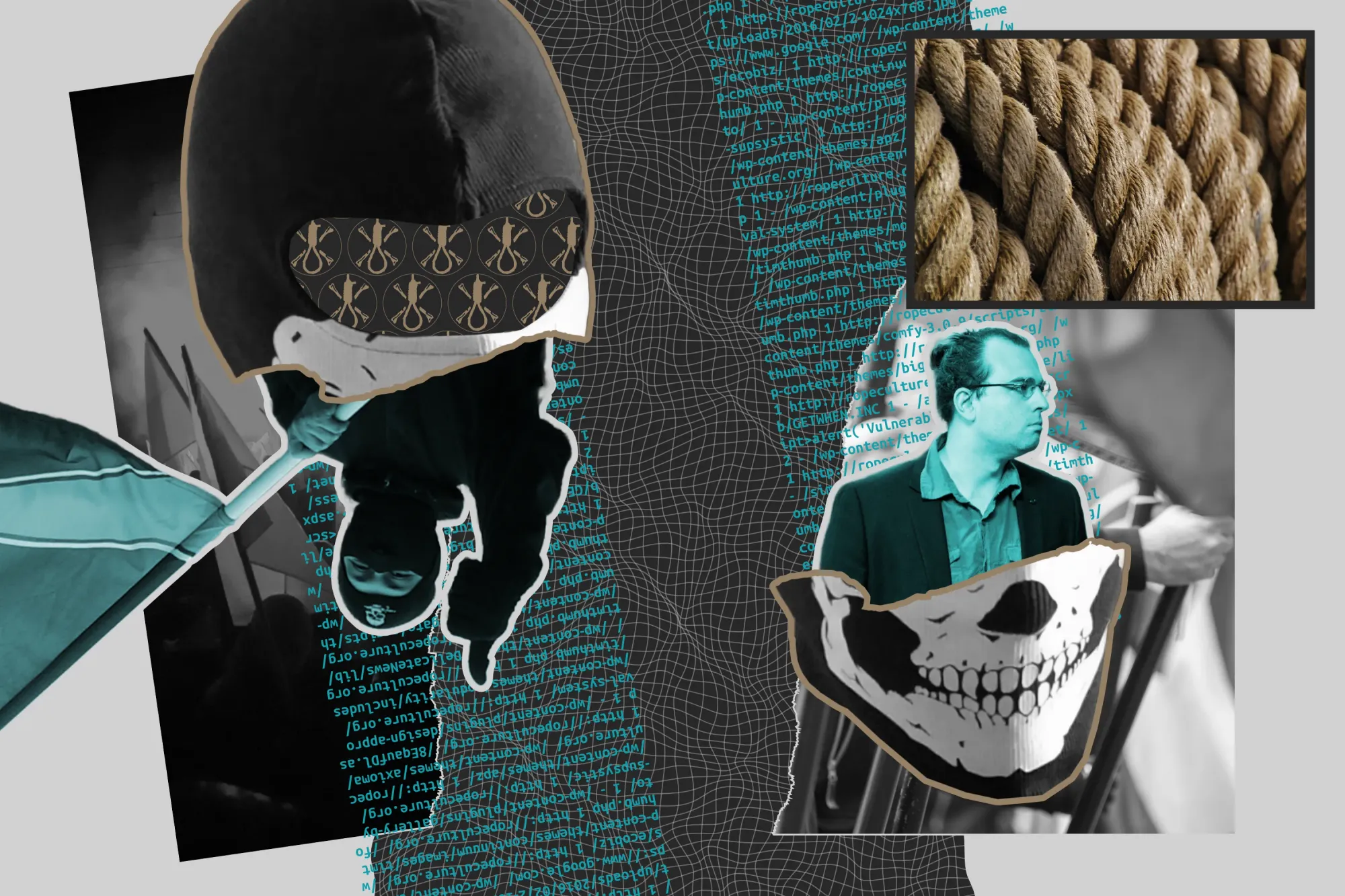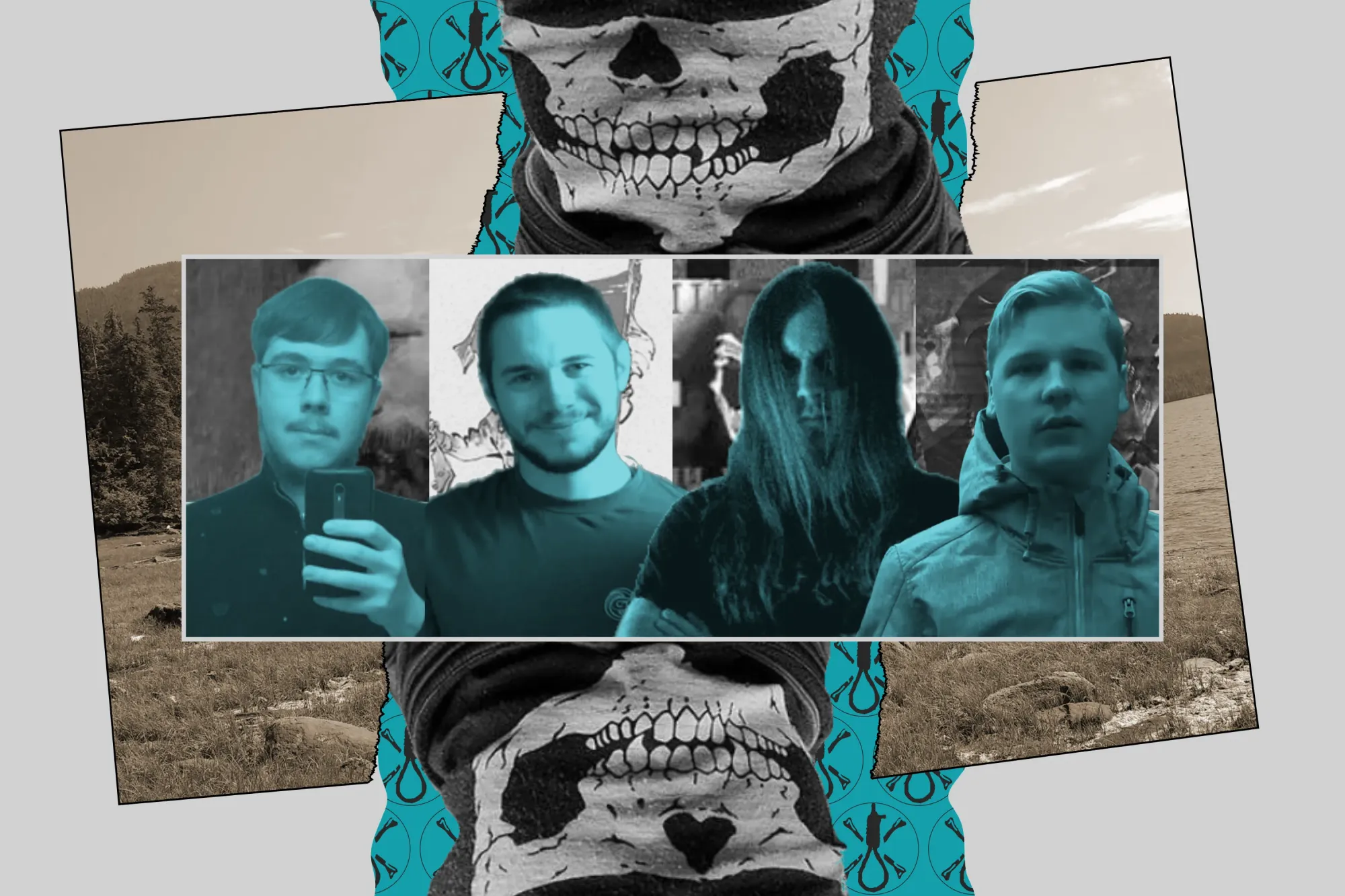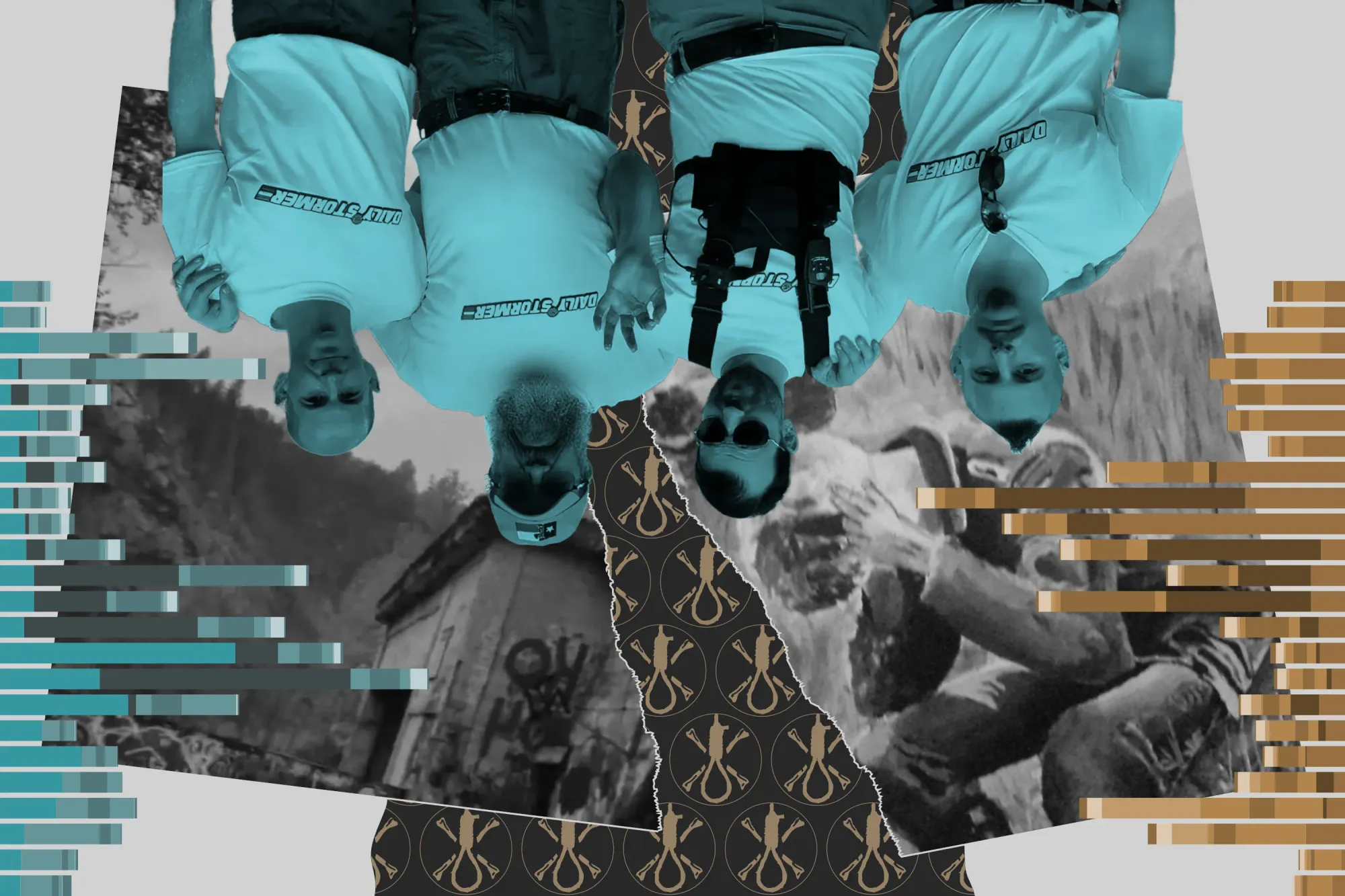In November 2019, a significant far-right data leak surfaced online in the shape of the SQL database of the notorious neo-Nazi forum, Iron March. Founded in 2011, the site has been offline since 2017. But its notoriety lived on, with dozens of users convicted of murder, crimes against children, terrorism-related charges, and other violent offenses.
The leak served as an invaluable resource for tracing the history of the modern neo-Nazi network and resulted in the identification of dozens of forum members, including active-duty US military personnel. It received significant press attention in several countries.
But researchers and journalists appear to have missed an insightful cache of information shedding further light on evolving contemporary far-right movements: The original torrent file containing the Iron March database also contained the full web server for the website that hosted Iron March’s electronic magazine (e-zine), "NOOSE."
The server—previously hosting ropeculture.org—contains email correspondence, attachments, article comments, image files, and a detailed log of every visit to the website including visitor IP addresses. The Rope Culture server also provides further insight into the transnational demographics and scope of its user base, the psychology of individuals interacting with the website, the activity of prominent users and administrators of Iron March, and how its ideology was spread across the internet.
What follows is the first large-scale public investigation into the Rope Culture web server. Our investigation reveals:
- The identities of over a dozen neo-Nazi figures, some of whom are already known and others who are being identified for the first time
- Several unpublished posts that were submitted to Rope Culture but never published, including some that allow their authors to be identified
- Significant contributions and frequent interactions on the site from identified members of the Atomwaffen Division, the notorious militant neo-Nazi organization associated with 5 murders between 2017 and 2018
- Over 275,000 unique website visitors with corresponding IP addresses and almost 1,000 article comments with potentially identifying attributes such as a comment author’s email and IP address
- Over 100 emails with accompanying attachments and metadata sent to and from the address “[email protected]”
- Further valuable insight into the operations of Iron March, a platform that was central to the development of the modern neo-Nazi network
What is Rope Culture?
The Rope Culture website served as a platform for prominent Iron March users to publish content aligning with the distinctive neo-Nazi ideology developed on Iron March.
Launched in December 2015, the website hosted the electronic magazine (e-zine) "NOOSE," which called itself “the world’s first and only global Online Fascist Zine.” The idea for the magazine originated in a March 2015 Iron March thread in which users suggested alternative names, including “Black Sun Rising,” “Black Mask,” and “Rope & Soap,” before settling on "NOOSE." The name is a reference to the “Day of the Rope,” a white supremacist meme originating from the racist 1978 book "The Turner Diaries" that describes the hanging of all “race traitors” after a fictionalized white revolution.
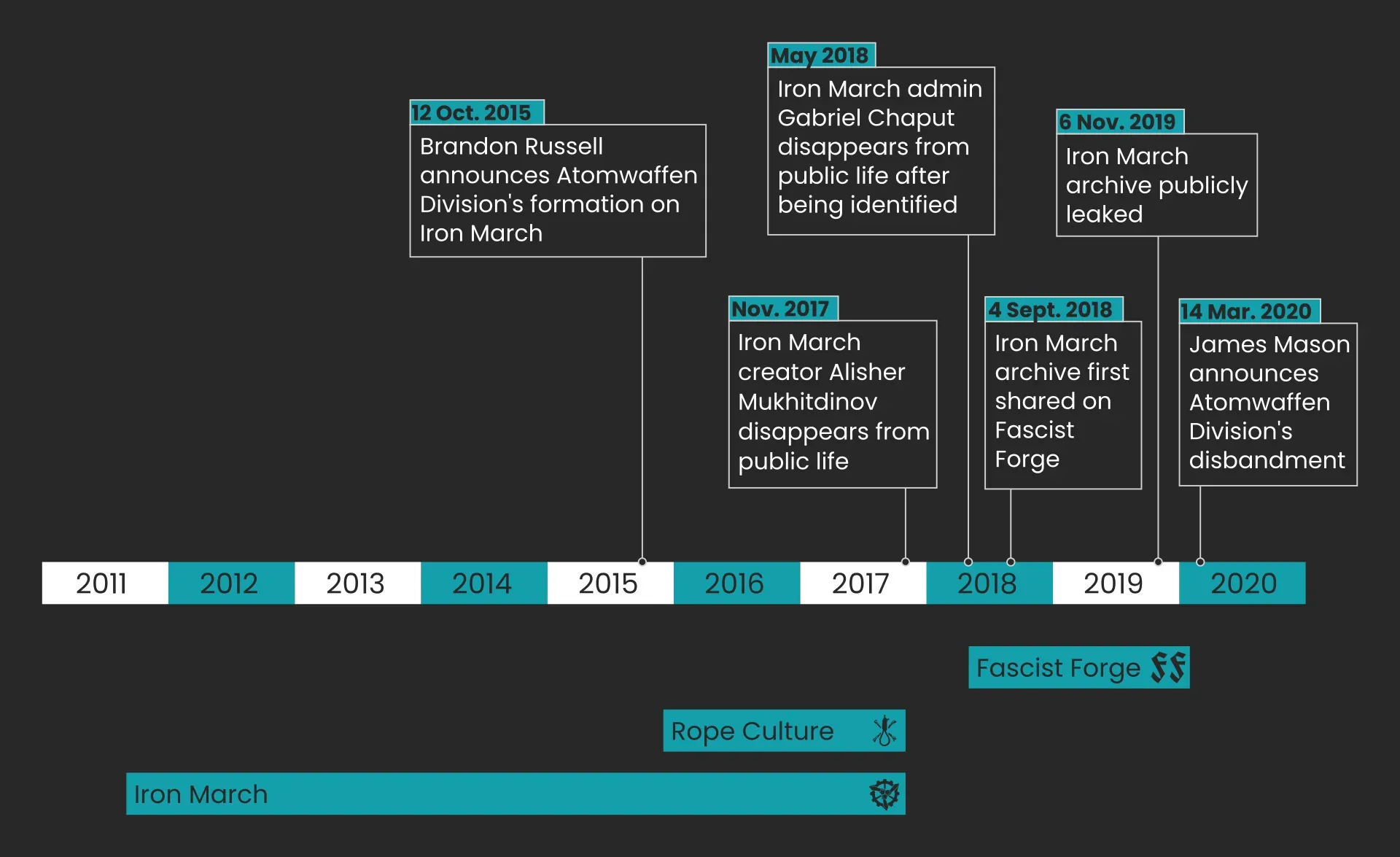
Many of "NOOSE"’s authors, like the pseudonymous Alexander Slavros and Zeiger, were also administrators or moderators on Iron March. Slavros, who created Iron March and Rope Culture, has been identified by the BBC, Meduza, the Guardian, and independent researchers as Alisher Mukhitdinov, a 36-year-old from Moscow, Russia. Mukhitdinov, from a politically connected family, studied at Moscow State University but was expelled after missing an exam. During this time, he began establishing an extreme nationalist presence online as “Alexander Slavros,” becoming an administrator on the “International Third Positionist Federation” (ITPF) forum, where he developed propaganda skills and transitioned from “quasi-Fascism” into explicit National Socialism. After ITPF went offline in Fall 2011, he and other admins launched a new forum, Iron March, on September 13, 2011.
The Slavros.org website, which he linked to on Iron March in describing his path towards his brand of fascism, was registered under Mukhitdinov’s name.
Slavros was one of Iron March’s most prolific users, composing more than 7,500 posts (averaging three per day between September 2011 and November 2017) and producing more than 2,000 images on an Imgur account that employed the same username, although the account and images have since been removed. Mukhitdinov, under his well-known alias, Slavros, published at least half a dozen books (both fiction and nonfiction) with the purpose of explaining the modern fascist framework and furthering the radicalization of newcomers to the movement. Several of these titles became required reading for new members of neo-Nazi groups, and their circulation continues to this day.

Zeiger is Gabriel Sohier-Chaput, a 38-year-old from Montreal, Quebec, who joined Iron March in December 2012 while working as an IT manager at a UPS store. Chaput, who admitted to using this alias in court, became an Iron March forum moderator in mid-2015 and maintained its archive of fascist literature. He wrote nearly 1,000 articles for the neo-Nazi outlet "The Daily Stormer,” which the Southern Poverty Law Center said “nurtured a new generation of white supremacists online.” Zeiger, whose identity was first revealed by the Montreal Gazette, was a staff writer and editor for “The Daily Stormer” and called himself its “#2 writer.” He promoted Daily Stormer Book Clubs and attended meetups hosted by The Right Stuff, a prominent neo-Nazi blog. As recorded in a Vice documentary, Chaput attended the deadly August 2017, “Unite the Right” rally in Charlottesville, Virginia, marching alongside “crying Nazi” Christopher Cantwell and fellow “The Daily Stormer” writer Robert Warren Ray (alias Azzmador).
Chaput was convicted by the Court of Quebec on January 23, 2023 of promoting hatred against Jews for writing a single Daily Stormer article and sentenced to 15 months in jail followed by 3 years of probation.

Other prominent Rope Culture staff contributors included Maxwell Macro (former treasurer of the now inactive Traditionalist Worker Party who used his real name and picture on Rope Culture), as well as the pseudonymous Hyperborean Shitlord (graphic designer for "NOOSE") and Florian Geyer (host of the “Christian Fascist” “Mysterium Fasces” podcast).
Decoherence Media reached out to Maxwell Macro for comment, but messages sent to two of his Yahoo email addresses went unanswered.
Based on an analysis of visitor IP addresses, approximately half of Iron March users visited the Rope Culture website.
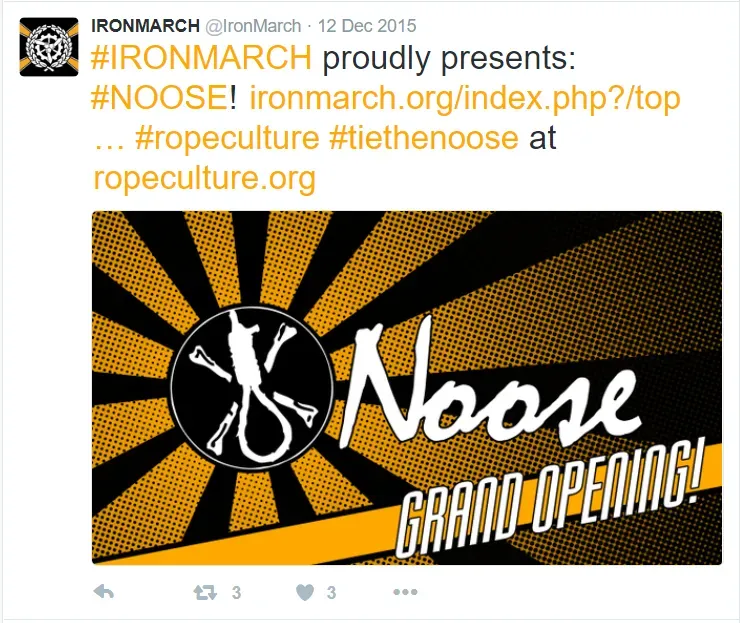
The Archive
According to a README file in the Iron March release, a link to the mega.nz archive containing the Rope Culture server was posted by a user called Femto on Fascist Forge, a successor forum to Iron March, on January 15, 2019.
This archive remained publicly available for no more than nine months. On October 17, 2019, an Australian user named Sherman wrote in a post: “The folder is gone.” Of note, the mega.nz link was previously posted on Fascist Forge three times between September 4, 2018 and October 2, 2018 by a user named Reltih (Hitler spelt backwards). The earliest share of the link Decoherence Media could identify was in a Pastebin file created on June 29, 2018.

Decoherence Media also identified a November 29, 2017 message in a Skype chat between Gabriel Chaput and another senior Iron March user “natteulven” (published by Unicorn Riot) in which the user wrote, regarding Iron March: “Keep this between us. But we have all the the [sic] material. It is not all deleted. We will rebuild everything. But, without slavros.”
What’s in the Rope Culture server archives?
Though the original mega.nz archive has since been deleted, a magnet link to the archive still exists and is well-seeded. The archive contains audiobooks and ebooks of works like Adolf Hitler’s "Mein Kampf" and Savitri Devi’s "The Lightning and the Sun," video footage from Nazi Germany, as well as modern Nazi documentaries and videos from influencers like Varg Vikernes and Million Dollar Extreme.
However, the most revealing content is in the subdirectory Iron March - NOOSE Backups/Iron March - Rope Culture Website Backups/Iron March - Rope Culture Backups, containing 3 files:
- database.sql: the Iron March admin database
- webserver_files.tar: the
/usr/share/nginxsubdirectory of Iron March’s web server - backup-11.24.2017_05-21-11_ropecult.tar.gz: the Rope Culture web server
The .tar and .tar.gz files can be extracted using a program like 7-Zip. The Iron March web server contains what appears to be every image uploaded to Iron March between March 2016 and November 2017 in the subdirectory /usr/share/nginx/html/uploads. The Rope Culture web server contains several interesting sources of data, including:
- homedir/mysql/ropecult_wp735.sql: admin database of the Rope Culture website containing commenter information and article edit history
- homedir/mail: emails sent to and from Rope Culture admin ([email protected])
- homedir/tmp/awstats: website visitor logs, including visitor IP addresses
All in all, the server contains a bounty of information that could be of use to researchers, journalists, activists, practitioners, legislators, and other community members.
Macro-level data reveals many interesting trends.
One folder contains data about visitors to the site, including their country, IP address, the page they visited, and what (if any) website referred them to Rope Culture. This data provides unique insight into the communities through which the Iron March ideology spread.
Associating each visitor’s IP address with a latitude and longitude using a database from IP2Location provides information about the demographics of Rope Culture’s visitors. It should be noted that if a visitor used a VPN to access the website, then this location estimation method would not be accurate. Additionally, people and companies have many reasons for visiting websites, including search engine optimization and scams, so every visitor is not necessarily a neo-Nazi.
Unsurprisingly, most visitors were from White-majority regions like the US, Canada, Europe, and Australia. Though starting out with a majority of visitors coming from Eastern Europe in December 2015, visitors from North America quickly grew, making up an absolute majority for most months after, as shown in the stacked bar chart below.

The interactive map below shows the geospatial distribution of visit locations. Each grid tile represents an equal geographic area and is colored by the number of visits within the tile. In addition to the expected population centers (such as Washington D.C., New York City, London, Moscow, and Sydney), there was also a significant number of visits from São Paulo, Santiago, Jakarta, Tokyo, Beijing, and Mumbai. The South American presence is consistent with an old Iron March infographic showing “Iron March National Branches” in Chile and Brazil.
The Fall of Rope Culture
Many of the groups and individuals who contributed to Rope Culture and communicated on Iron March have already faced repercussions.
In early 2020, American federal law enforcement arrested senior members of Atomwaffen Division and The Base, resulting in those organizations being effectively dismantled. Fascist Forge, which was a successor to Iron March and had several prominent members affiliated with those organizations, was taken offline shortly after the arrests. Gabriel Chaput was sentenced in September 2023 to 15 months in prison for promoting hatred against Jewish people. Mukhitdinov seems to have stepped back from online far-right communities since Iron March went down in 2017. But according to Andrei Soshnikov, editor-in-chief at Systema (RFE/RL’s Russian Investigative Unit), “we cannot claim that Mukhitdinov's de-anonymization was without consequences—after all, his departure from the public space was very abrupt, and in Russia this sometimes happens as a result of informal intrusion of security services into a person's life.”
As far as Soshnikov can tell from leaked personal databases, “Mukhitdinov still lives in Moscow. I think he made almost every possible effort to make it impossible to trace him.”
Decoherence Media reached out to Alisher Mukhitdinov for comment to two email.ru accounts, but received no reply by publication. We reached out to Gabriel Chaput for comment as well, but our inquiries sent to a Gmail and Yandex account went unanswered.
Despite the collapse of early accelerationist neo-Nazi groups originally inspired by Iron March and Rope Culture, the ideology developed on those sites remains alive. Instead of a single centralized forum like Iron March, the modern transnational accelerationist neo-Nazi community uses decentralized networks that include thousands of channels on Telegram to avoid a single point of failure. Content from Rope Culture is often shared in these channels. Using an aesthetic style inspired by Iron March, prominent nodes in the network frequently coordinate to produce publications and calls for action. Such calls from Terrorgram have reportedly inspired at least half a dozen known terror plots in Slovakia, Brazil, Turkey, Australia, and the US.
Though the leaked Iron March database has been publicly available for more than five years, there are still new and valuable leads to be gained from the data, as well as the original torrent the database came from. Hundreds of researchers poured over the Iron March server in November 2019, yet somehow missed the Rope Culture web server data within the torrent. This shows that even in well-trodden datasets, a fresh pair of eyes can still find new insights.
Decoherence Media has created a tool that organizes and simplifies searching both the Rope Culture and Iron March datasets. We have created a written and video guide to help users familiarize themselves with the site. There is still much to be discovered! Anyone interested in exploring this database can access the tool on the website fashyleaks.com.


